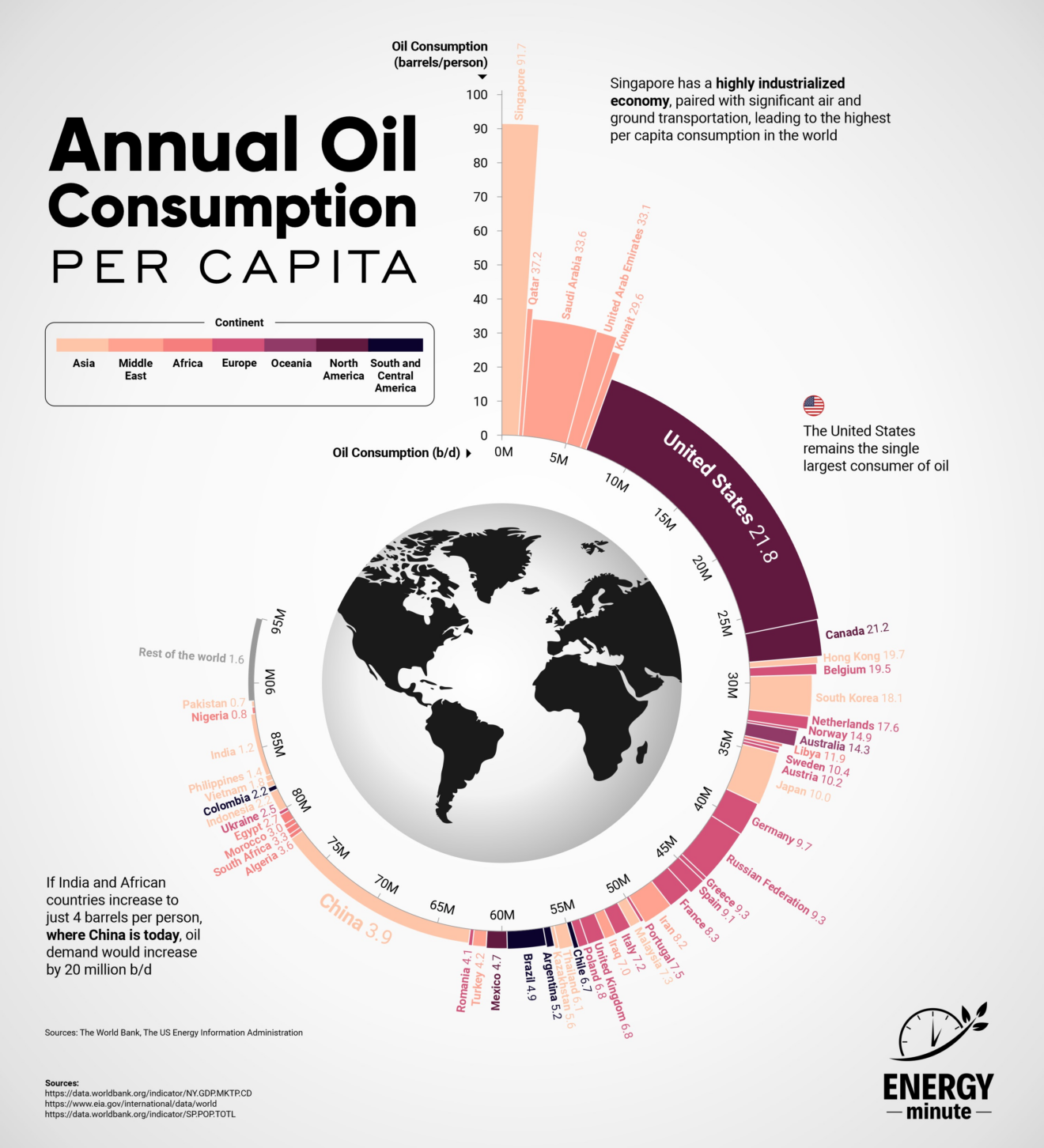By Aaron Foyer

Courtesy of ENERGYminute
See more articles and infographics from ENERGYminute HERE
Key drivers of oil consumption
Oil consumption per capita is primarily driven by a country’s level of industrialization, transportation infrastructure, economic development, and energy policies.
Developed nations with extensive transportation networks and industrial sectors tend to have higher consumption rates. And factors such as urbanization, vehicle ownership, and energy efficiency measures can significantly influence per capita oil consumption. Geopolitical considerations, including access to oil reserves and international trade agreements, also play a role in shaping consumption patterns. Lastly, efforts to transition to alternative energy sources and reduce dependency on oil can impact consumption trends over time.
Variability between countries
Oil consumption per capita varies significantly around the world and is influenced by factors such as a country’s level of industrialization, transportation infrastructure, economic development, and energy policies. As of my last knowledge update in September 2021, here’s a general overview of oil consumption per capita:
- High-Consumption Countries: Industrialized and economically developed countries tend to have higher oil consumption per capita. For example, countries like Singapore, the United States, Australia, and Saudi Arabia typically have high levels of oil consumption per capita due to their extensive transportation networks, large industrial sectors, and reliance on oil for various purposes.
- Middle-Consumption Countries: Many middle-income countries, such as those in Europe, Asia, and South America, also have moderate levels of oil consumption per capita. These countries are often smaller and have well-developed transportation systems and industrial sectors.
- Low-Consumption Countries: Developing nations and countries with smaller populations tend to have lower oil consumption per capita. This is often due to limited industrialization and lower vehicle ownership rates. Examples include countries in Africa, parts of Asia, and some small island nations.
Within regions and countries, there can be significant variability in oil consumption. Urban areas with high vehicle ownership and industrial activity tend to have higher consumption rates compared to rural areas.
Sources:
https://data.worldbank.org/indicator/NY.GDP.MKTP.CD
https://www.eia.gov/international/data/world
https://data.worldbank.org/indicator/SP.POP.TOTL
Share This:




